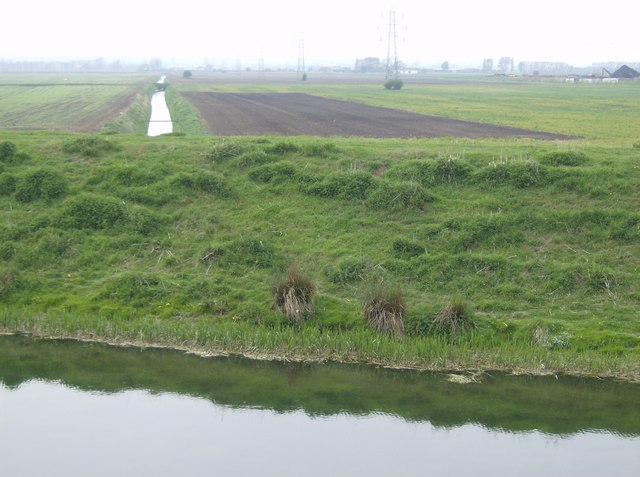Gilbert Heathcote's Tunnel on:
[Wikipedia]
[Google]
[Amazon]
 Gilbert Heathcote's tunnel was an engineering project dating from the 1630s as one of the earliest modern attempts to drain
Gilbert Heathcote's tunnel was an engineering project dating from the 1630s as one of the earliest modern attempts to drain Welland and Deepings IDB
/ref>
 Gilbert Heathcote's tunnel was an engineering project dating from the 1630s as one of the earliest modern attempts to drain
Gilbert Heathcote's tunnel was an engineering project dating from the 1630s as one of the earliest modern attempts to drain The Fens
The Fens, also known as the , in eastern England are a naturally marshy region supporting a rich ecology and numerous species. Most of the fens were drained centuries ago, resulting in a flat, dry, low-lying agricultural region supported by a ...
in Lincolnshire
Lincolnshire (abbreviated Lincs.) is a county in the East Midlands of England, with a long coastline on the North Sea to the east. It borders Norfolk to the south-east, Cambridgeshire to the south, Rutland to the south-west, Leicestershire ...
. Rendered obsolete by the mechanical drainage improvements after World War II, it was finally removed in 1991.
It carried water, under gravity, from Bourne
Bourne may refer to:
Places UK
* Bourne, Lincolnshire, a town
** Bourne Abbey
** Bourne railway station
* Bourne (electoral division), West Sussex
* Bourne SSSI, Avon, a Site of Special Scientific Interest near Burrington, North Somerset
* Bourne ...
South Fen, Thurlby Fen and Northorpe Fen to the Counter Drain and thence to Deeping Fen
Deeping Fen is a low-lying area in the South Holland district of Lincolnshire, England, which covers approximately . It is bounded by the River Welland and the River Glen, and is extensively drained, but the efficient drainage of the land exerc ...
. A tunnel was required under the River Glen which was (and still is) artificially banked with a level some 3 metres above the surrounding lands and above the Counter Drain. The Counter Drain was pumped further downstream by wind-driven machinery, erected later. At the time of construction Deeping Fen was still inundated.
In 1871 the Bourne South Fen Drainage District was formed to take over the drainage, which had been in the hands of adventurers, and from 1872 a succession of steam engines were used to assist the flow through the tunnel.
The location is around 500m upstream on the Glen of the confluence with the Bourne Eau
Bourne Eau is a short river which rises from an artesian spring in the town of Bourne in Lincolnshire, England, and flows in an easterly direction to join the River Glen at Tongue End. Within the town, it once powered three water mills, one of w ...
. Tongue End
__NOTOC__
Tongue End is a small village in the South Holland district of Lincolnshire, England. It is situated east from Bourne and south-west from Spalding, and alongside the Counter Drain that runs between Baston and Pode Hole.
Tongue E ...
is the nearest settlement. The modern by-road alongside the original drain to the tunnel is still called ''Tunnel Bank''.
The Gilbert Heathcote for whom it is named appears to be the grandfather of Sir Gilbert Heathcote, 1st Baronet
Sir Gilbert Heathcote, 1st Baronet (2 January 1652 – 25 January 1733), was a British merchant and Whig politician who sat in the English and British House of Commons between 1701 and 1733. He was a Governor of the Bank of England and was L ...
, and an ancestor of the first Baron Aveland. That family later inherited nearby Grimsthorpe Castle
Grimsthorpe Castle is a country house in Lincolnshire, England north-west of Bourne on the A151. It lies within a 3,000 acre (12 km2) park of rolling pastures, lakes, and woodland landscaped by Capability Brown. While Grimsthorpe is not ...
, but must have had land and associations with this area to claim the title of Aveland.
The area drained falls within the area of the Welland and Deepings Internal Drainage Board
An internal drainage board (IDB) is a type of operating authority which is established in areas of special drainage need in England and Wales with permissive powers to undertake work to secure clean water drainage and water level management withi ...
./ref>
References
{{coord, 52.7483, N, 0.29816, W, region:GB_type:river, display=title, name=Site of Sir Gilbert Heathcote's TunnelGlen
A glen is a valley, typically one that is long and bounded by gently sloped concave sides, unlike a ravine, which is deep and bounded by steep slopes. Whittow defines it as a "Scottish term for a deep valley in the Highlands" that is "narrower ...
History of Lincolnshire
17th century in England
Tunnels in Lincolnshire
Fens of England
Drainage canals in England